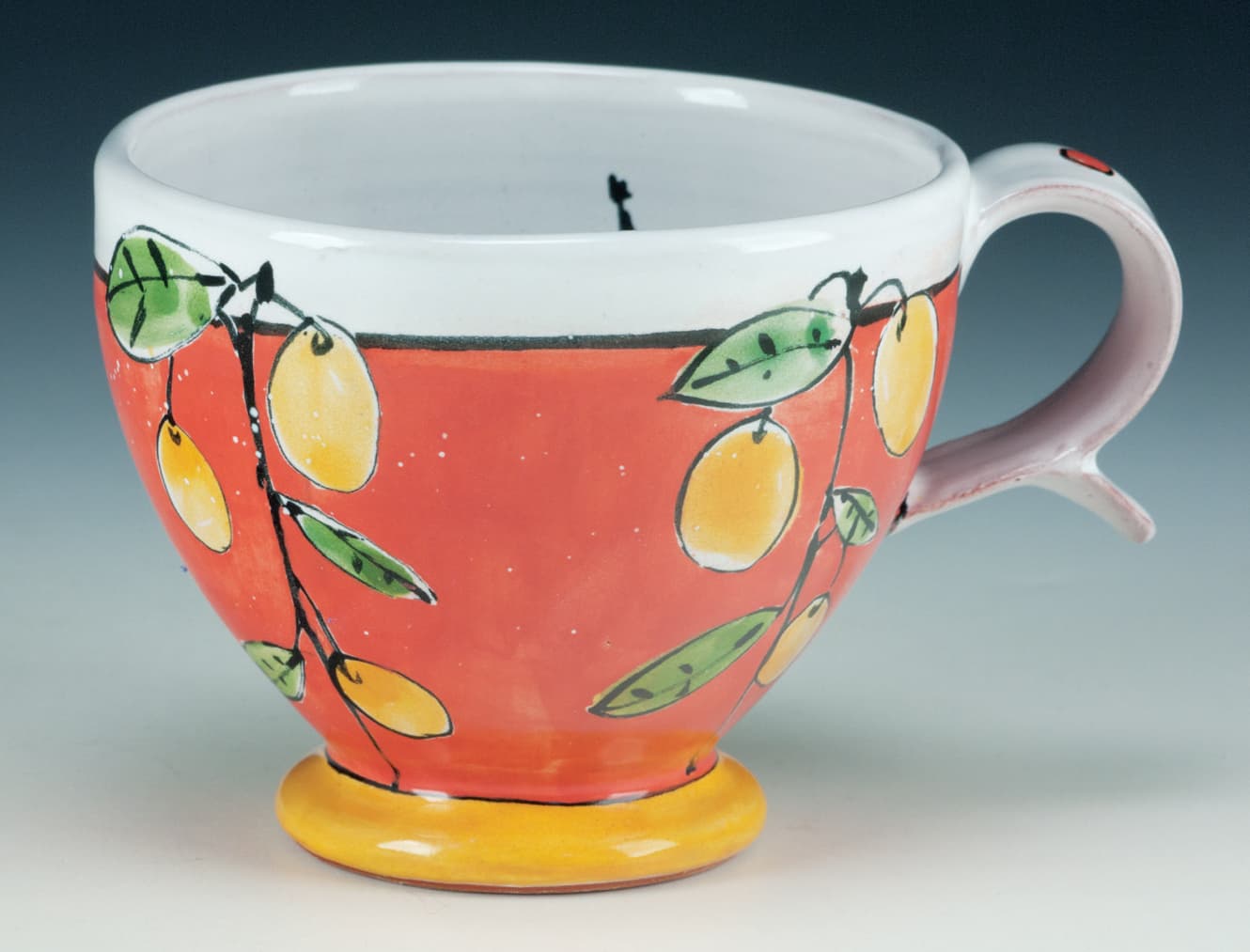FOREWORD
THROWING POTTERY IS MAGICAL to watch; shaping clay into a new form on a spinning wheel is an art all its own. As a maker, you channel magic from your mind and eye through your hands—so perhaps it’s no surprise that the process moves from an initial conscious effort to a tacit body skill over time. Just like drawing, playing a musical instrument, touch typing, or driving a stick shift vehicle, you’ll find that with practice, your brain moves from thinking about how and what to do to a state mediated in the body. You will think about wanting to make a form—and somehow it happens through your hands without conscious thought about each step. You let your eyes and your hands make it, with your brain in the back seat. As much as every beginning thrower (or experienced thrower making a new form) would like this shift to “body knowledge” to happen instantly, it’s a slow process built through repetition over time.

Linda Arbuckle, bowl. Photo courtesy of the artist

Linda Arbuckle, cup. Photo courtesy of the artist
Yet while there is a transition from the brain to the eyes and hands as throwing skills progress, it is helpful once you make a work to move from what your hands created back to thinking about how that object may work for the user or viewer. Only consideration and analysis of the pot after it is made will help you adjust and resolve your creation so it really sings. Thought collaborates with body knowledge in the process of throwing, making for a give and take between them that is always an interesting challenge. The materiality of clay and the personal touch of the potter add other dimensions to thoughts and plans about pieces. Personally, I believe that thoughtful, considered work is better than work based solely in process, although we all need process and skills to make work. In other words, it takes insight to orchestrate the diverse parts of a pot and use throwing to best advantage, and therein lays the fun.
I have known Ben Carter since he came to the University of Florida as a post-baccalaureate ceramic student in 2004. Since that time, he’s continued to broaden his ideas and abilities by working in numerous artist-in-residence programs, completing his MFA at the University of Florida and lecturing in a variety of universities and art centers in the United States and abroad, as well as interviewing many artists for his popular podcast. The two years he spent in Shanghai as Educational Director at The Pottery Workshop exposed him to new ways to work, wonderful historic pottery, and fresh ideas about functional ware. Ben’s understanding of form and technique has grown to encompass a broad view of process and ideas, which has increased his sensitivity to the place of the wheel as a tool.
This breadth of understanding makes him a very comprehensive teacher and a wonderful person to write a book about using the wheel to make pots. You’ll find his book is rich with details and examples that both beginning potters as well as more seasoned makers will appreciate. As you take the book’s lessons and exercises into your own studio, you’ll find throwing is an experience that will take you on a journey, often to unexpected places. Enjoy your discoveries.
—LINDA ARBUCKLE